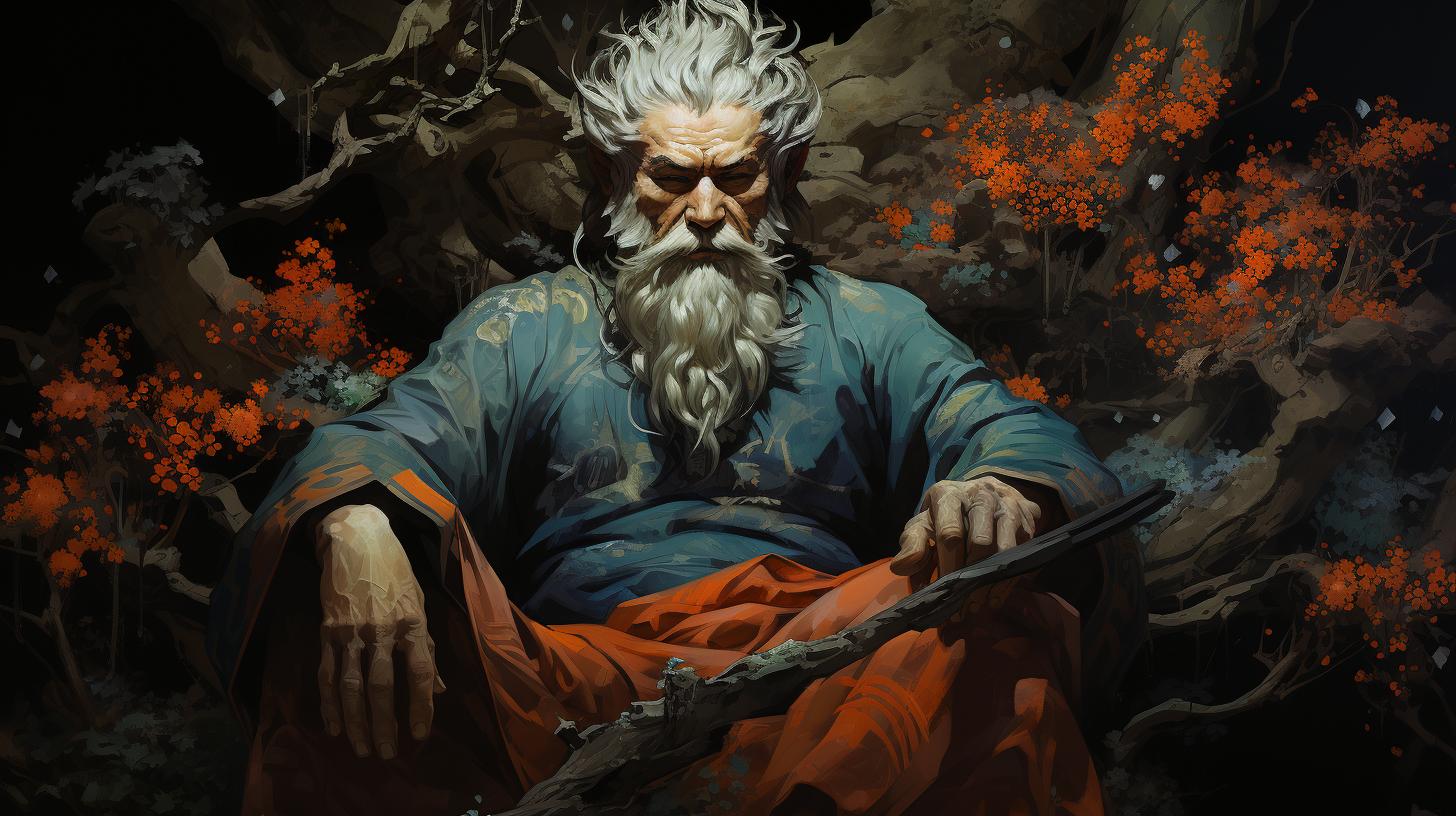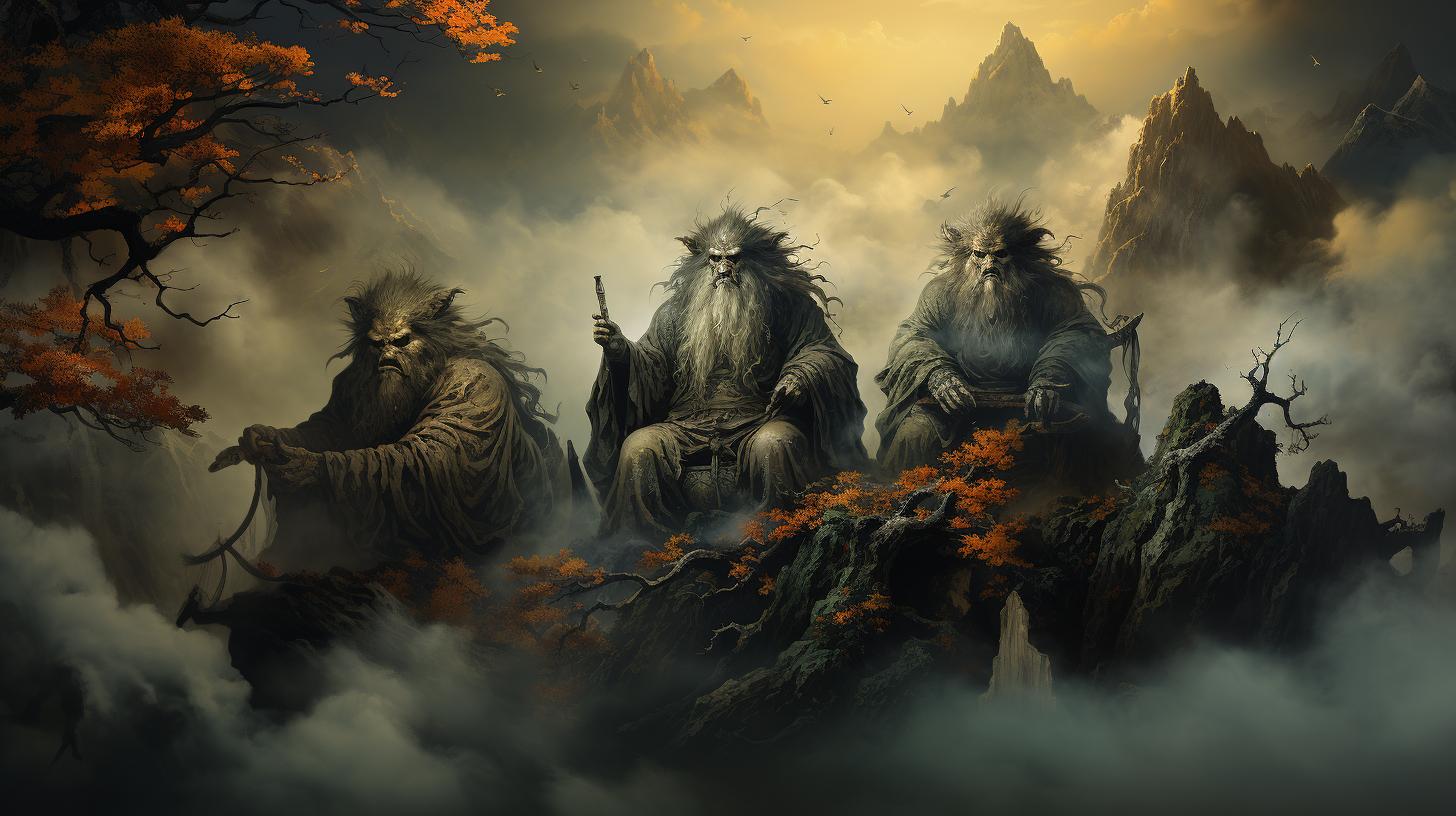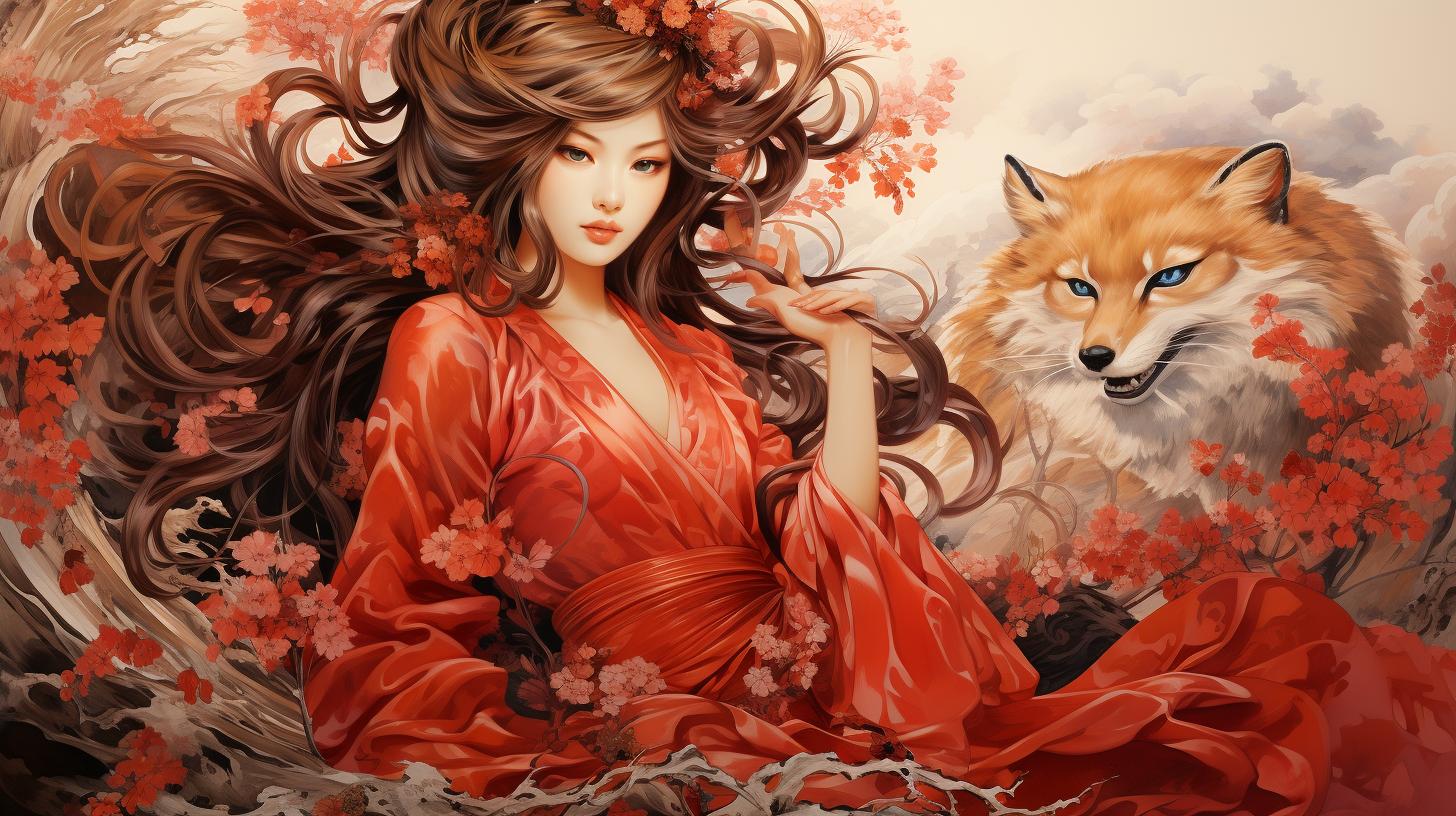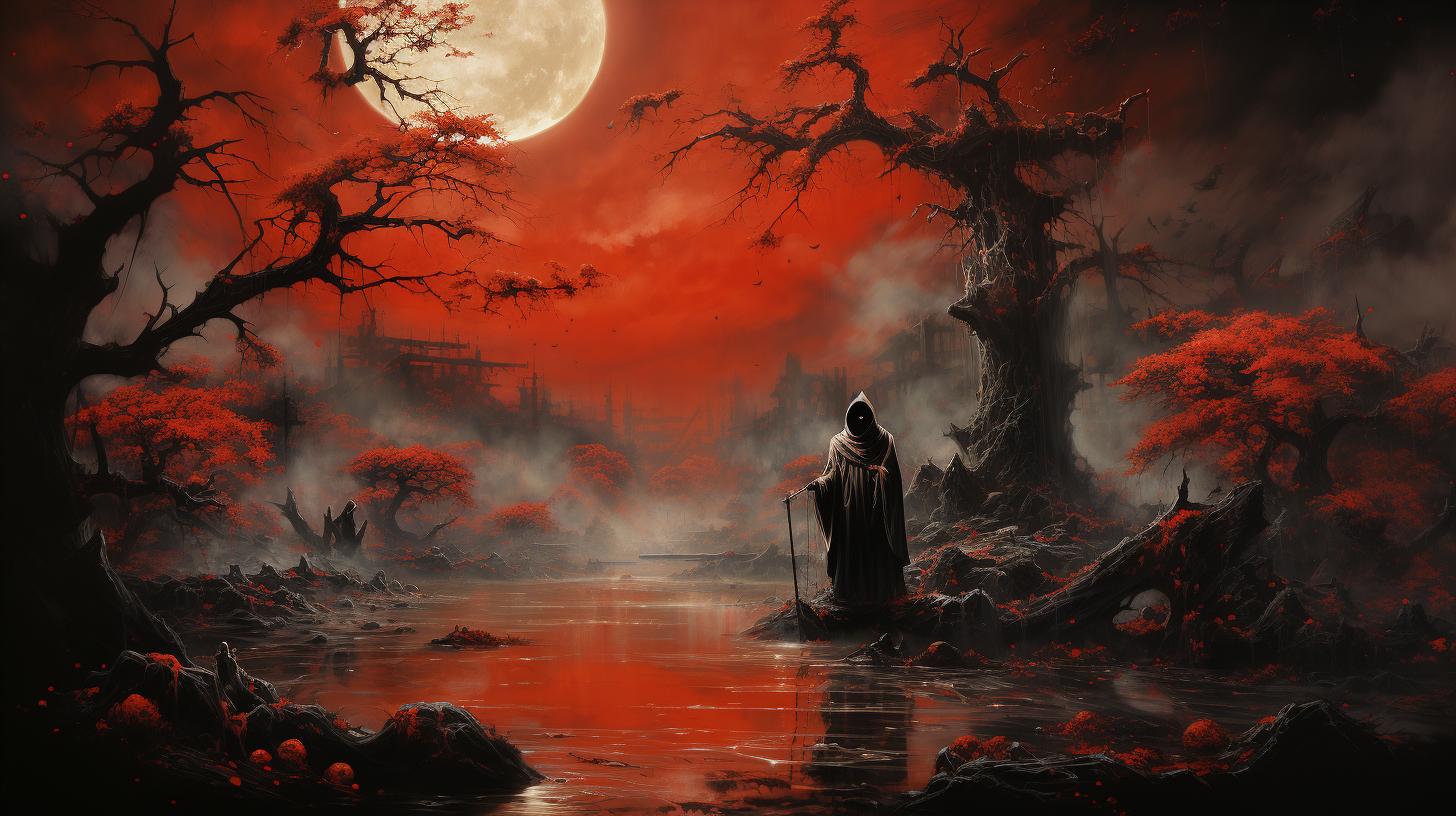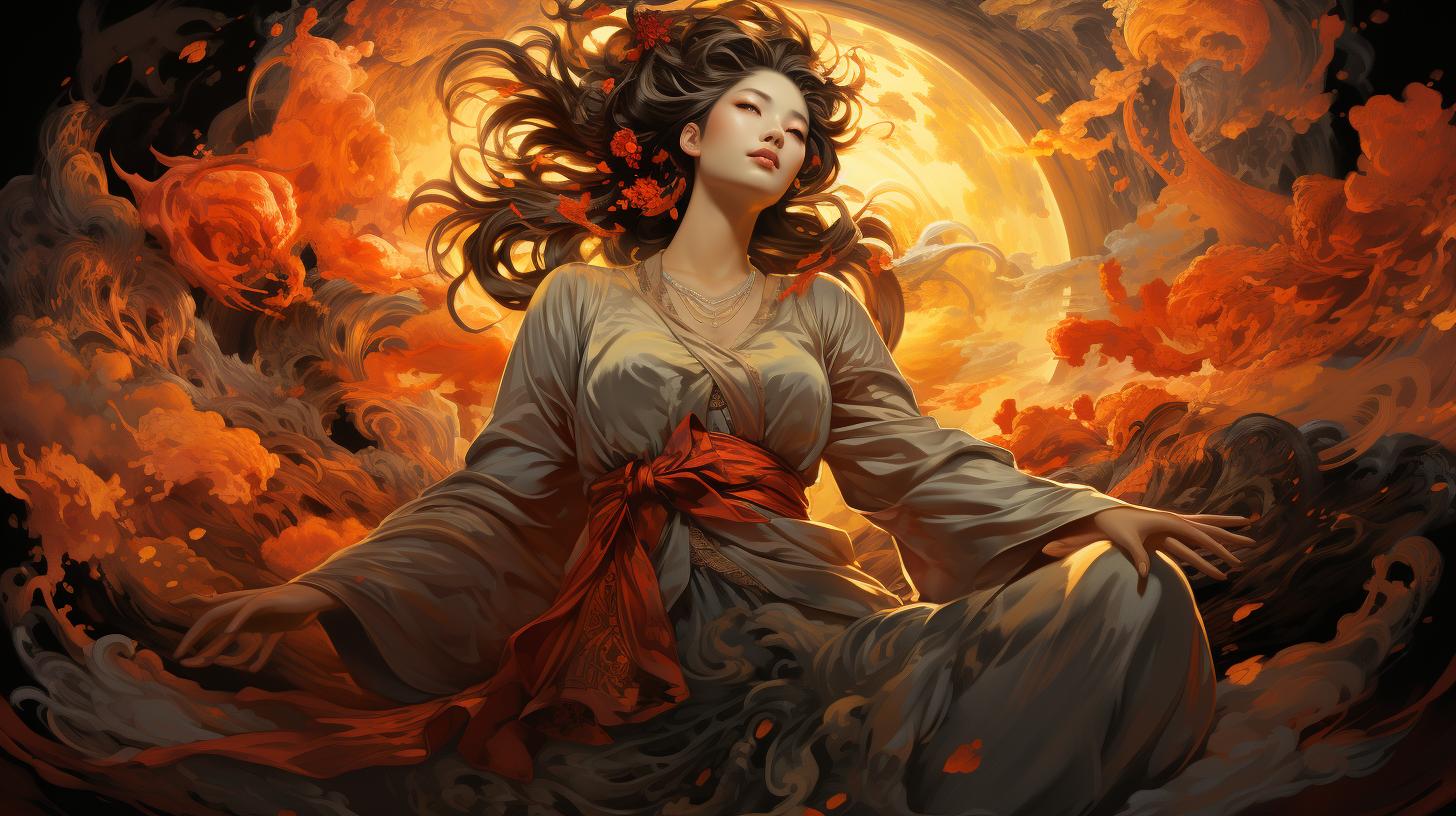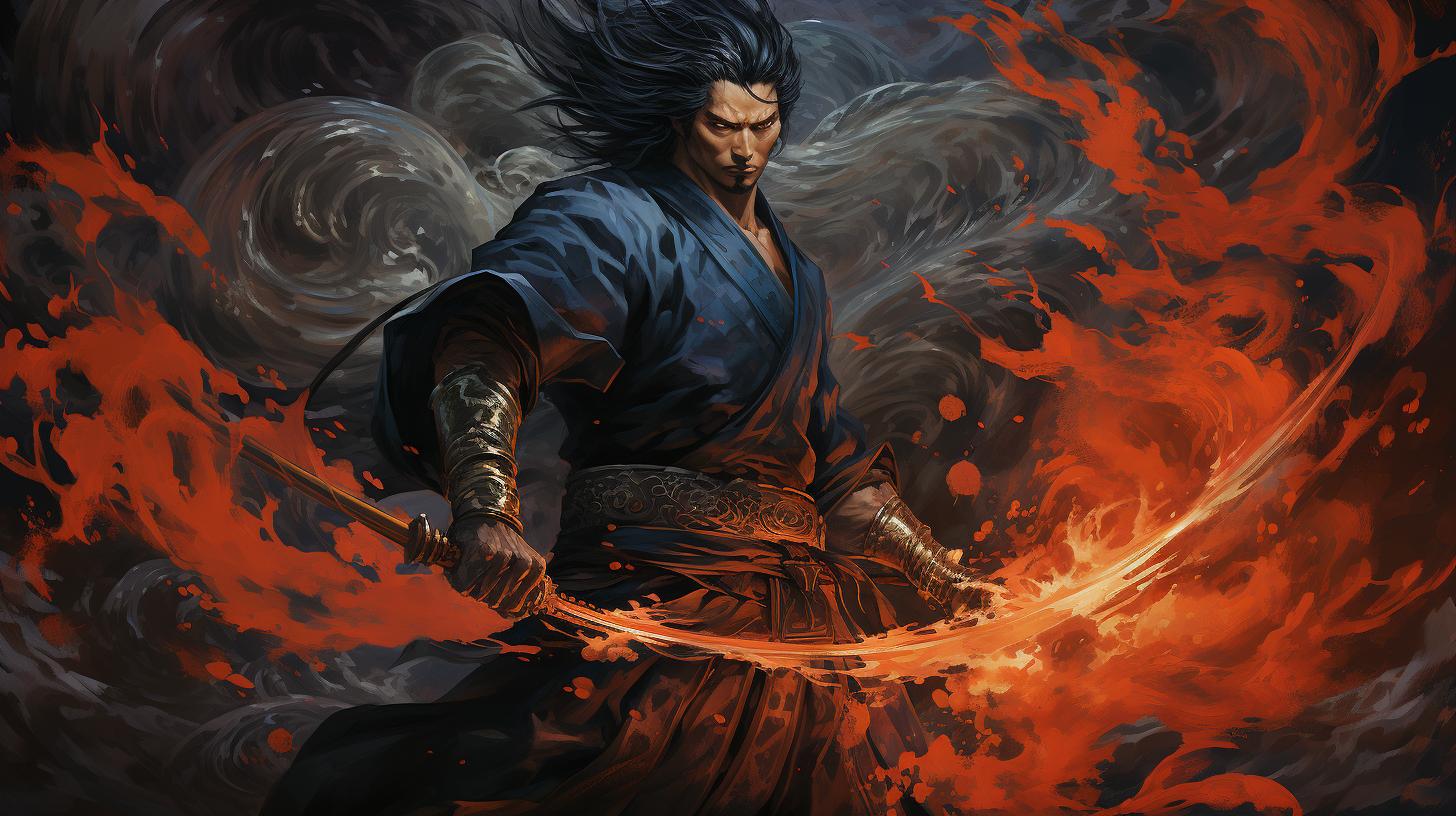Okuninushi God: The Mythological Ruler of Izumo in Japanese Folklore
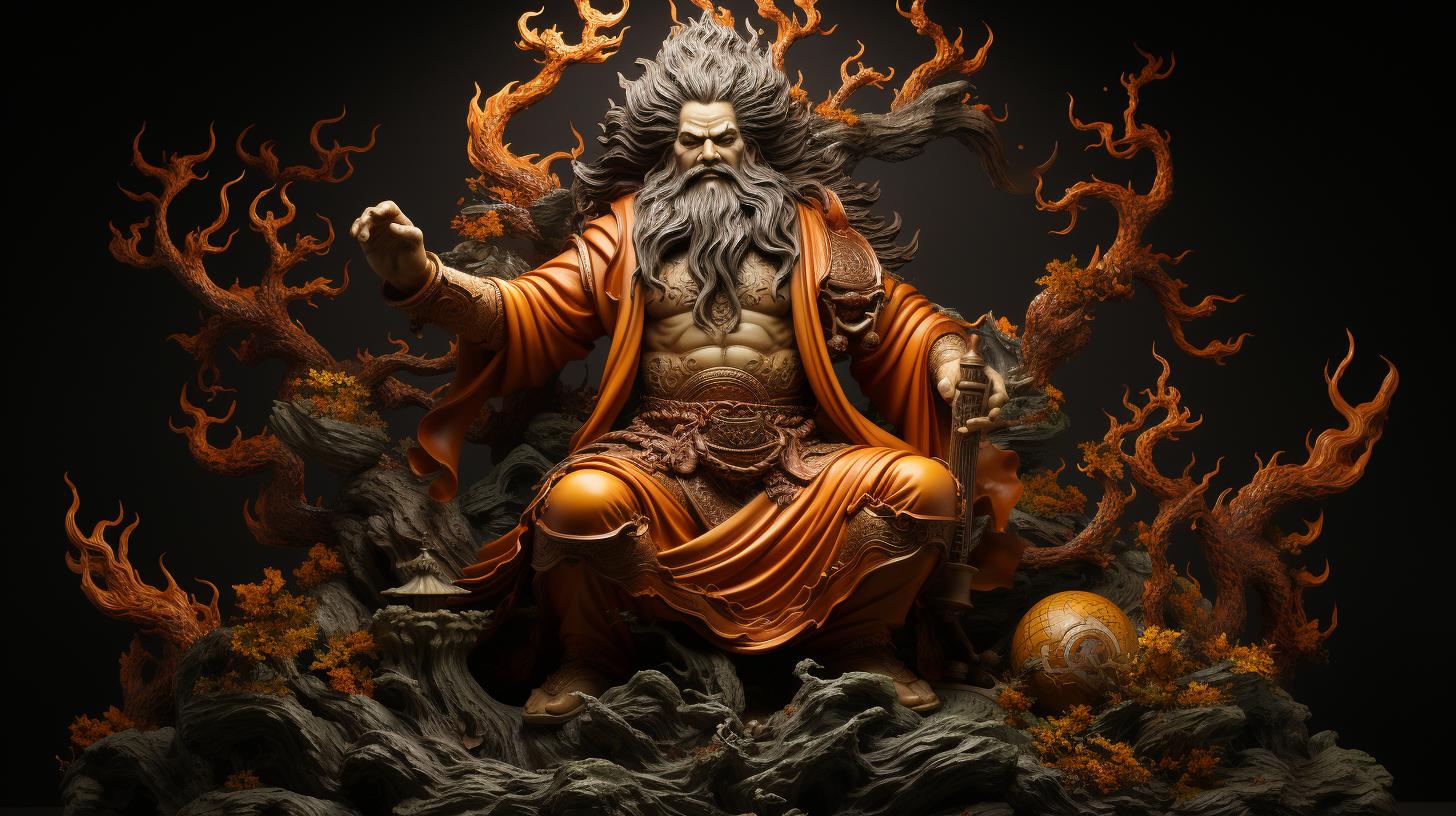
Okuninushi god is a prominent figure in Japanese mythology, known as the chief deity of Izumo Province. According to legends, he played a crucial role in the creation of the world and overcame various challenges to become the ruler of Izumo.
Associated with the province and deeply connected to its folklore, Okuninushi is also linked to the tale of his escape from the underworld with Princess Suseri. This article explores the origins, role, trials, and significance of Okuninushi in Japanese culture, shedding light on his revered status in Shinto practices and literature.
The Origins of Okuninushi in Japanese Mythology
Okuninushi is a revered deity in Japanese mythology, known for his significant role in the creation of the world and his association with the province of Izumo. According to ancient texts and folklore, Okuninushi was initially identified as a son of the divine couple, Izanagi and Izanami, who were tasked with forming the Earth and its inhabitants.
As the mythology unfolds, Okuninushi gradually emerged as a prominent figure, renowned for his wisdom, kindness, and leadership qualities. He played a pivotal role in shaping the terrestrial realm and became regarded as the original ruler of the world.
However, the heavenly deities, known as the celestial gods, desired dominion over the Earth. They sent the god Susanoo, associated with storms and the seas, to confront Okuninushi and persuade him to relinquish his authority.
Despite his reluctance, Okuninushi ultimately acquiesced to the celestial gods’ wishes. He willingly surrendered his governance of the Earth, retreating to the realm of the invisible, where he continued to exert his influence and assist humans behind the scenes.
Deeply rooted in the province of Izumo, Okuninushi became a revered deity among the local population, considered the chief deity of the region. He holds a special place in the hearts of the people, with numerous shrines dedicated to his worship.
The Role and Attributes of Okuninushi
Okuninushi, also known as Ōkuninushi-no-mikoto, holds a significant position in Japanese mythology and folklore, particularly in relation to Izumo Province. As the chief deity of Izumo, Okuninushi is revered for his role as the original ruler of the land and his contributions to the creation of the world.
Okuninushi as the Chief Deity of Izumo Province
Within the realm of Izumo Province, Okuninushi is acknowledged as the primary deity and holds a position of great importance. He is considered the ruler and guardian of the land, revered for his wisdom, guidance, and protection.
The people of Izumo province have both respected and worshipped Okuninushi for centuries, seeking his blessings for a prosperous life and harmonious existence.
Okuninushi’s Associated Deities and Relationships
- Daikoku: Worshiped as a god of wealth, Daikoku is often associated with Okuninushi due to their similar attributes and sphere of influence.
- Ebisu: Known as the god of fishers and luck, Ebisu is closely linked with Okuninushi and is revered alongside him in various festivals and rituals.
- Sukunahikona: Okuninushi’s association with Sukunahikona, a deity known for his expertise in various arts, highlights his influence in the realms of medicine, disaster control, and other domains crucial for human welfare.
Okuninushi’s Powers and Domains
Okuninushi possesses a diverse range of powers and domains, making him a revered figure in Japanese mythology.
Some of his notable attributes and realms include:
- Medicine and Healing: Okuninushi is renowned for his mastery in the art of medicine, offering remedies and guidance to those in need.
- Nature and Land: As the ruler of Izumo Province, Okuninushi has dominion over the natural world, ensuring the fertility of the land and the welfare of its inhabitants.
- Harmony and Relationships: Okuninushi represents the power of harmony and unity in relationships, providing guidance in matters of love, family, and social interactions.
- Transformation: Okuninushi possesses the ability to shape-shift, symbolizing his adaptability and transformative nature.
These characteristics and powers further establish Okuninushi’s significant role in Japanese mythology and highlight his divine attributes, making him a central figure in the collective consciousness of the Japanese people.
The Trials and Challenges Faced by Okuninushi
In his journey to become the ruler of Izumo, Okuninushi encountered numerous trials and challenges that tested his bravery, resilience, and wisdom. These trials showcased his determination and solidified his position as a powerful and worthy deity.
Okuninushi’s Ascension to Ruler of Izumo
Before Okuninushi could claim his position as the ruler of Izumo, he had to prove his worthiness through a series of tests. These challenges aimed to assess his leadership abilities and his capacity to govern the land effectively.
Confrontations with His Brothers
As Okuninushi pursued his path to rulership, he faced confrontations with his brothers, who were envious of his position. These conflicts tested Okuninushi’s diplomatic skills and his ability to navigate complex family dynamics.
Overcoming Dangerous Tests and Obstacles
Okuninushi encountered treacherous tests and life-threatening obstacles on his journey. One such test involved sleeping in a room filled with venomous snakes and centipedes, showcasing Okuninushi’s courage and his ability to conquer fear.
Additionally, Okuninushi demonstrated his resourcefulness in overcoming challenges related to controlling disasters caused by birds and insects. He created innovative methods to manage these threats and protect the land of Izumo.
Overall, Okuninushi’s trials and challenges not only proved his worthiness as a leader but also showcased his exceptional qualities and the extent of his influence in the mythological realm of Japan.
Okuninushi’s Connection with the Province of Izumo
Okuninushi, the revered deity of Japanese mythology, holds a significant connection with the province of Izumo. This region in Japan is known for its deep-rooted traditions, folklore, and its association with Okuninushi worship.
Izumo Shrine and Okuninushi Worship
At the heart of Izumo lies the Izumo Taisha, also known as the Izumo Shrine, one of the oldest and most important Shinto shrines in Japan. This sacred site is dedicated to Okuninushi, making it a focal point for his worship and veneration.
The Izumo Shrine serves as a spiritual sanctuary where believers come to pay homage and seek blessings from Okuninushi. Its serene atmosphere and awe-inspiring architecture make it a popular destination for devotees and tourists alike.
Within the shrine complex, specific areas are dedicated to Okuninushi, including his sacred artifact, the “Ame-no-Mihashira,” believed to connect the earthly and divine realms. Pilgrims often offer prayers and make symbolic gestures of gratitude to honor Okuninushi’s role as the chief deity of Izumo.
Legends and Folklore in Izumo Associated with Okuninushi
Izumo is steeped in legends and folklore that revolve around Okuninushi, adding to the mystical aura surrounding the deity. These tales capture Okuninushi’s trials, triumphs, and his interactions with other celestial beings.
One prevalent legend tells the story of Okuninushi’s ascent to rulership over Izumo, where he endured challenges and confrontations with his brothers. Overcoming treacherous tests, including encounters with serpents and other dangerous creatures, Okuninushi ultimately proved his worthiness as the ruler of the land.
Another captivating tale centers around Okuninushi’s relationship with Susanoo, the god of storms and seas, and his daughter, Princess Suseri. Okuninushi’s daring escape from Susanoo’s palace in the underworld, with Princess Suseri as his companion, speaks to his resourcefulness and determination.
These legends and folklore not only showcase Okuninushi’s extraordinary character but also highlight the deep-rooted belief in his divine presence and the reverential attachment the people of Izumo hold towards him.
- Izumo Shrine is a sacred site dedicated to Okuninushi, the chief deity of Izumo.
- Believers come to Izumo Shrine to seek blessings and pay homage to Okuninushi.
- Pilgrims offer prayers and make symbolic gestures of gratitude.
- Izumo is rich in legends and folklore that revolve around Okuninushi.
- These tales capture Okuninushi’s trials, triumphs, and his interactions with other celestial beings.
- One legend tells the story of Okuninushi’s ascent to rulership over Izumo, facing challenges and proving his worthiness.
- Another tale speaks of Okuninushi’s escape from Susanoo’s underworld palace with Princess Suseri.
- These legends emphasize Okuninushi’s extraordinary character and the deep reverence people hold for him.
Okuninushi’s Relationship with Susanoo and Suseri
Okuninushi and Susanoo’s Palace in the Underworld
Within the realm of Japanese mythology, the relationship between Okuninushi and Susanoo, the storm deity, holds great significance.
Okuninushi’s encounter with Susanoo in the underworld is a pivotal moment in his narrative. Legends tell us that Susanoo, the brother of the sun goddess Amaterasu, had a palace in the underworld where he resided.
It was during Okuninushi’s journey that he arrived at this mysterious palace, where he would ultimately change the course of his destiny.
As Okuninushi navigated through the darkness of the underworld, he stumbled upon the palace of Susanoo.
Here, amidst the shadows, he would encounter Princess Suseri, the daughter of Susanoo. Their meeting forged a deep and profound connection, intertwining their destinies in ways that would shape the future.
Escaping with Princess Suseri and Creating a New Land
United by their love, Okuninushi and Princess Suseri made a daring escape from the clutches of the underworld, carrying with them the most treasured possessions of Susanoo. Their journey led them to the majestic grounds at the foot of Mount Uka, where they established a new land and built a magnificent palace.
It was here that they would begin anew, shaping their own destiny away from the underworld’s influence.
With their arrival at Mount Uka, a transformation occurred. Okuninushi changed his name and took on the role of Okuninushi, signifying his newfound sovereignty and divine connection.
Together, they cultivated a realm that would come to be known for its vibrancy, beauty, and harmony.
This tale of escape and rebirth symbolizes the resilience and determination of Okuninushi and Suseri, as they courageously defied the confines of fate and established a new beginning for themselves and their followers.
Their partnership would continue to have a lasting impact on the mythology and folklore of Izumo, leaving an indelible mark on the cultural tapestry of Japan.
- Okuninushi and Susanoo’s Palace in the Underworld: A transformative encounter in the depths of the underworld where Okuninushi’s fate took an unexpected turn.
- Escaping with Princess Suseri and Creating a New Land: The courageous escape of Okuninushi and Princess Suseri from the underworld and their journey to establish a prosperous new realm.
The Significance of Okuninushi in Japanese Culture
Okuninushi is a revered figure in Japanese culture, holding great significance in various aspects of Shinto practices, rituals, folklore, and literature.
Okuninushi in Shinto Practices and Rituals
In Shinto, Okuninushi is worshipped as a deity associated with prosperity, healing, and relationships. Many devoted followers of Shintoism seek his blessings for abundance and harmonious connections in their lives.
Devotees often visit the prestigious Izumo Taisha, a Shinto shrine in Izumo Province, to pay homage to Okuninushi.
Annual festivals and rituals are held to honor him and seek his guidance and blessings.
During these rituals, participants offer prayers, make sacred offerings, and perform purification rituals to establish a spiritual connection with Okuninushi and seek his favor.
Okuninushi’s Influence on Japanese Folklore and Literature
Okuninushi’s tales and legends are deeply ingrained in Japanese folklore and have inspired numerous works of literature throughout history.
- Many traditional folktales depict Okuninushi as a sagacious and benevolent deity, often assisting humans in their quests and trials.
- His role as the ruler of Izumo, his confrontations with his brothers, and his escapades in the underworld are recurrent themes explored in Japanese folklore.
- Okuninushi’s stories have been passed down through generations, capturing the imagination of listeners and readers alike.
In literature, Okuninushi’s influence extends beyond folklore.
His character often embodies themes of resilience, transformation, and the quest for balance between the earthly and spiritual realms. Writers and poets have found inspiration in his tales, infusing their works with his symbolism and messages.
From ancient texts to contemporary novels, Okuninushi’s presence resonates in Japanese literary traditions, further cementing his significance in the cultural landscape.
In conclusion, Okuninushi holds immense importance in Japanese culture. His role in Shinto practices and rituals, coupled with his profound influence on Japanese folklore and literature, solidify his status as a revered deity and a timeless figure in Japanese cultural heritage.
.

